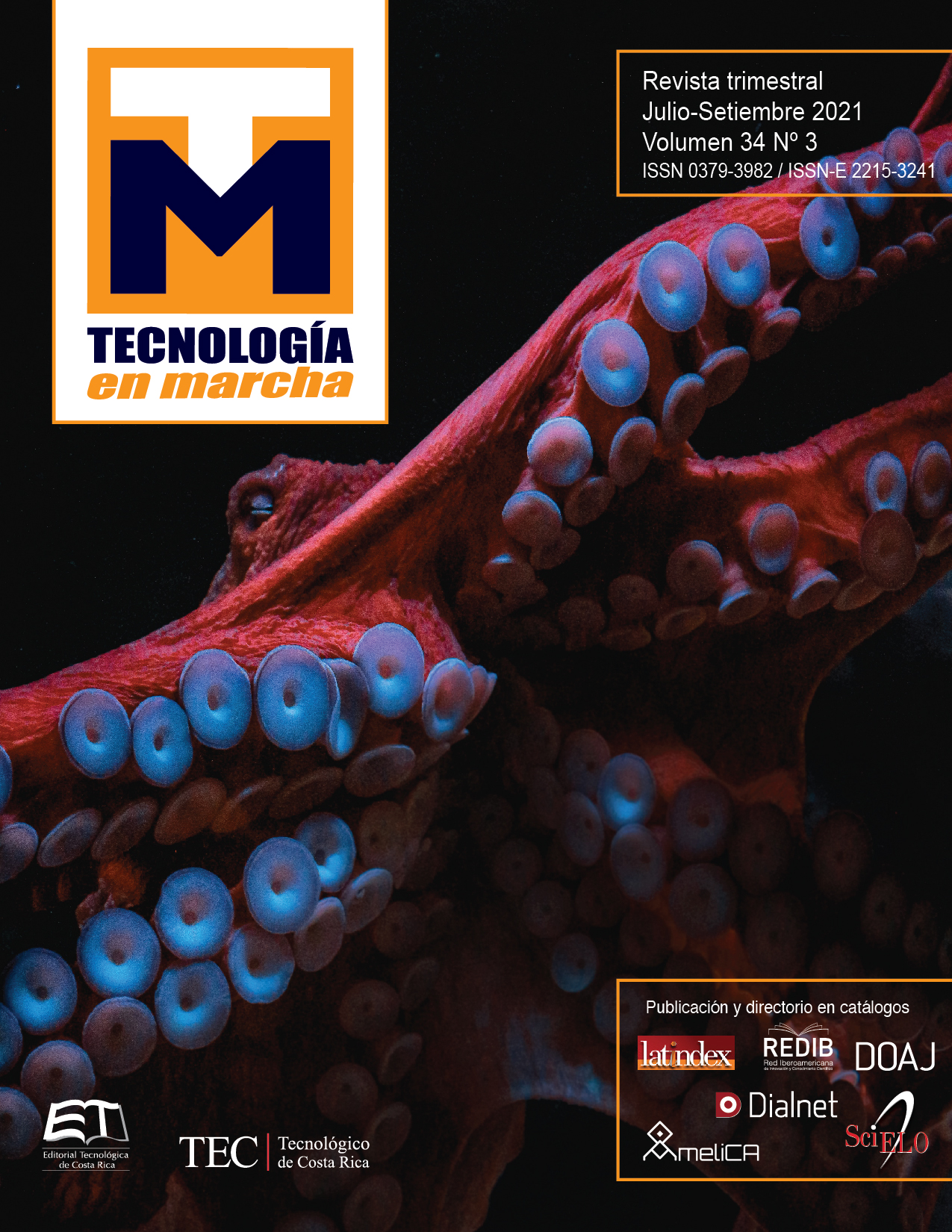Methodologies for the calculation of greenhouse gas emissions: description of the control project in a cement-producing Industry
Main Article Content
Abstract
The global cement industry is responsible for approximately 5% of total CO2 emissions in the world, as a result of chemical reactions in clinker production, fuel consumption, electricity use, transportation of raw materials and finished products. The general objective of this research is to provide the methodological bases for the preparation of the emission control project with a view to an initial audit for Greenhouse Gases (GHG) in a Cement industry in order to identify the management level of its systems and processes for calculating GHG scope 1 and 2 and suggest a GHG calculation procedure that strengthens the GHG emissions reporting processes. This work was based on the ISO 14064-2, regarding the Specification, at the project level, for the quantification, monitoring and the basis for defining the report of the reduction of emissions or the increase in greenhouse gas removals. The main variables to consider in the validation of the inventory of GHG emissions that are suggested will be considered in the framework of the audit taking first level; to set within the company the initial year or zero, and to integrate a historical compendium of at least 5 years of GHG emissions, to estimate emissions from calcination of raw material, by use of fuels and cement production.
Article Details

This work is licensed under a Creative Commons Attribution-NonCommercial-NoDerivatives 4.0 International License.
Los autores conservan los derechos de autor y ceden a la revista el derecho de la primera publicación y pueda editarlo, reproducirlo, distribuirlo, exhibirlo y comunicarlo en el país y en el extranjero mediante medios impresos y electrónicos. Asimismo, asumen el compromiso sobre cualquier litigio o reclamación relacionada con derechos de propiedad intelectual, exonerando de responsabilidad a la Editorial Tecnológica de Costa Rica. Además, se establece que los autores pueden realizar otros acuerdos contractuales independientes y adicionales para la distribución no exclusiva de la versión del artículo publicado en esta revista (p. ej., incluirlo en un repositorio institucional o publicarlo en un libro) siempre que indiquen claramente que el trabajo se publicó por primera vez en esta revista.
References
E. Benhelal, E. Shamsaei, M.I. Rashid. “Challenges against CO2 abatement strategies in cement industry: A review”, Journal of Environmental Sciences, Volume 104, 2021, Pages 84-101, https://doi.org/10.1016/j.jes.2020.11.020
N.C.Onat, M. Kucukvar. “Carbon footprint of construction industry: A global review and supply chain analysis”, Renewable and Sustainable Energy Reviews, Volume 124, 2020, 109783, https://doi.org/10.1016/j.rser.2020.109783
P. Wu, B. Xia, J. Pienaar, X. Zhao. “The past, present and future of carbon labelling for construction materials – A review” Building and Environment, Volume 77, 2014, Pages 160-168, https://doi.org/10.1016/j.buildenv.2014.03.023
Gases de Efecto Invernadero (GEI). Available: https://ghgprotocol.org/
Green house gas protocol. Available: https://ghgprotocol.org/guidance-0
J. Cagiao, B. Gómez, J.L. Doménech, S. Gutiérrez Mainar, H.Gutiérrez Lanza. “Calculation of the corporate carbon footprint of the cement industry by the application of MC3 methodology”. Ecological Indicators, Volume 11, Issue 6, 2011, Pages 1526-1540, https://doi.org/10.1016/j.ecolind.2011.02.013
British Standards Institution, BSI . Guide to PAS 2050. How to assess the carbon footprint of goods and services. 2008
International Atandard on Assurance Engagements 3410 (ISAE 3410), Assurance engagements on greenhouse gas statements. Available: http://www.ifac.org
International Organization for Standarization. Greenhouse Gases –Part 3: specification with guidance for the validation of greenhouse gas assertions, (ISO 14064), firts edition 2006-03-01.
GEI México. Available: http://www.geimexico, consultado el 9 de octubre d 2012.
A. Talaei, D. Pier, A. V. Iyer, Md Ahiduzzaman, A. Kumar. “Assessment of long-term energy efficiency improvement and greenhouse gas emissions mitigation options for the cement industry”, Energy, Volume 170, 2019, Pages 1051-1066, https://doi.org/10.1016/j.energy.2018.12.088.
E. Hache, M. Simoën, G. Sokhna Seck, C. Bonnet, A. Jabberi, S. Carcanague.” The impact of future power generation on cement demand: An international and regional assessment based on climate scenarios”. International Economics, Volume 163, 2020, Pages 114-133, https://doi.org/10.1016/j.inteco.2020.05.002.
S. Balsaraa, P. Kumar Jainc, A. Rameshd. “An integrated approach using AHP and DEMATEL for evaluatingclimate change mitigation strategies of the Indian cement manufacturing industry”, Environmental Pollution 252 (2019) 863-878, https://doi.org/10.1016/j.envpol.2019.05.059
Federación Interamericana del Cemento (FICEM) Informe estadístico 2011, FICEM.
CEMEX (2010), Inventario Corporativo de GEI Cemex México.
D. Song, B. Chen.” A Life Cycle Modeling Framework for Greenhouse Gas Emissions of Cement Industry”, Energy Procedia, Volume 61, 2014, Pages 2649-2653,
https://doi.org/10.1016/j.egypro.2014.12.267
J. Farfan, M. Fasihi, C. Breyer. “Trends in the global cement industry and opportunities for long-term sustainable CCU potential for Power-to-X”, Journal of Cleaner Production, Volume 217, 2019, Pages 821-835,
https://doi.org/10.1016/j.jclepro.2019.01.226
M. Schneider.”The cement industry on the way to a low-carbon future”, Cement and Concrete Research, Volume 124, 2019, 105792,
https://doi.org/10.1016/j.cemconres.2019.105792
Unzalu, P. Guía Metodológica para la aplicación de la norma UNE ISSO 14064-1:2006 para el desarrollo de inventarios de gases de efecto invernadero en organizaciones. Ed. Ihobe, Sociedad Pública de Gestión Ambiental. España. 2012.

